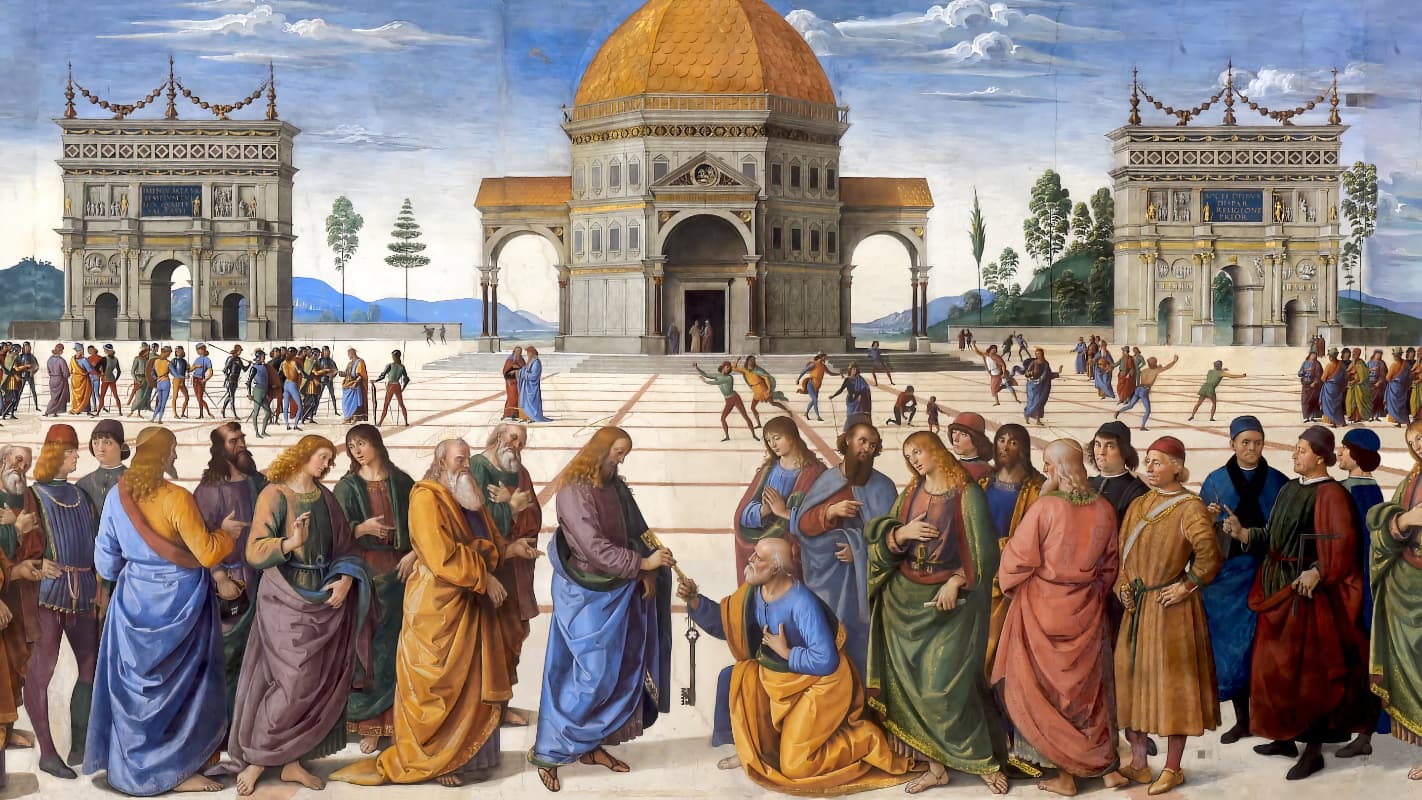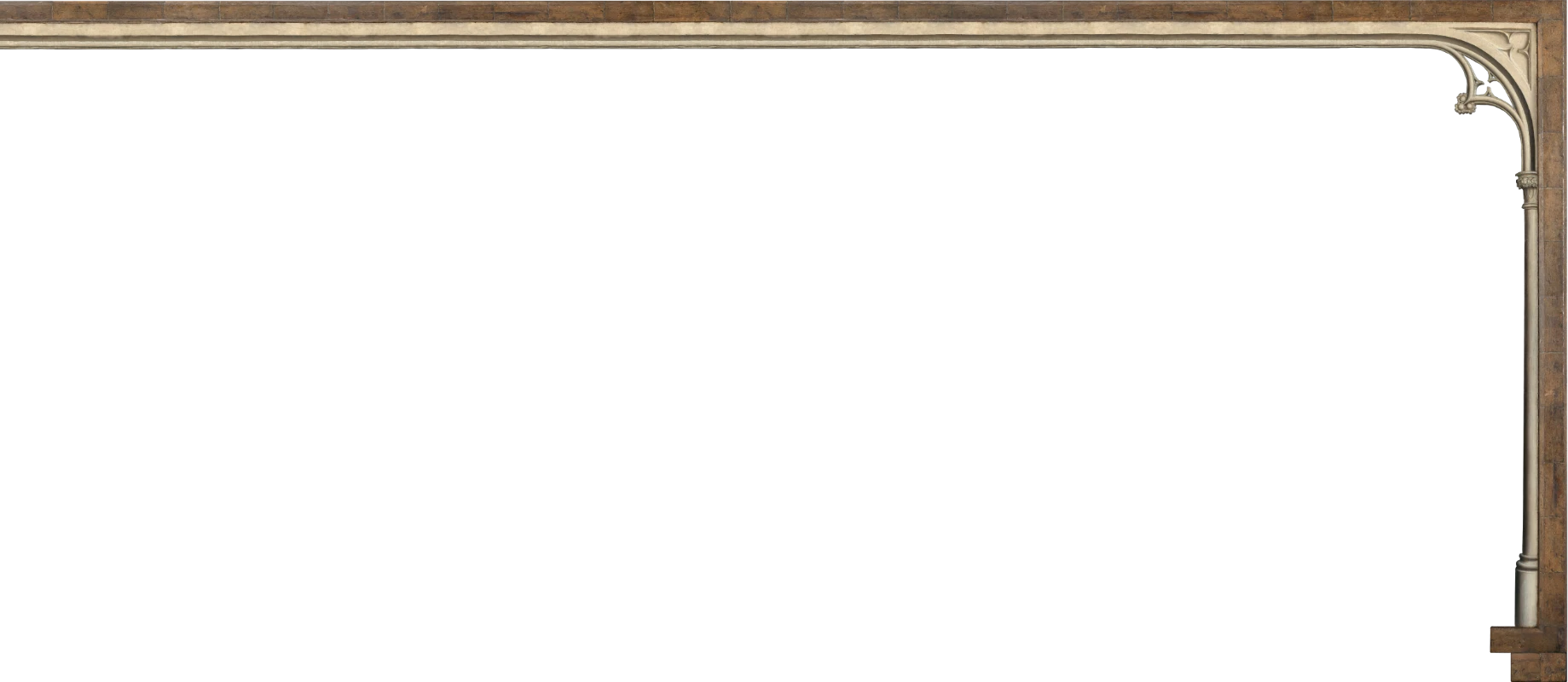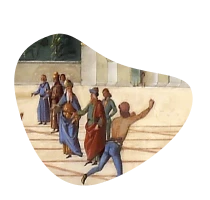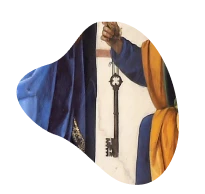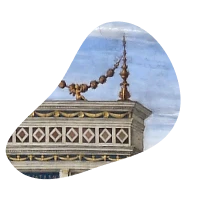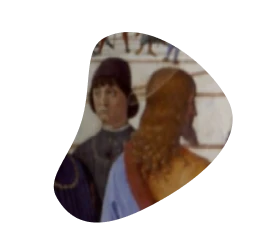In the Biblioteca Ambrosiana in Milan, founded by Cardinal Federico Borromeo in 1609, you can find the “Portrait of a Musician,” Leonardo da Vinci’s only surviving portrait of a man. Could it have been a portrait of Josquin des Prez? Leonardo and Josquin both worked at the court of the Sforza at the same time in the late 1480s. They might have known each other; they might have been friends and Leonardo could have taken oil and maybe tempura and painted a picture of his friend on a little panel of walnut wood. If he did, it would be the only surviving likeness of the composer.

We set out to find the portrait; but it was the height of the 2021 coronavirus lockdown. The museum was closed, and the curators were not giving interviews. Instead, we spoke to Geoff Lehman, art historian and professor at Bard College in Berlin, and we asked him: could Leonardo da Vinci’s portrait be of Josquin des Prez? And he said: What makes you think it’s by Leonardo? There is no paper trail for the painting’s provenance, he told us; the evidence, in his opinion, suggests that Leonardo’s painting of Josquin is not Josquin and not by Leonardo.
Somehow, that seems emblematic of so much of Josquin scholarship, which sometimes seems better at proving that things weren’t composed by Josquin then that they were. But we do at least know to which member of the Sforza family Josquin was especially connected: Ascanio Sforza. In Milan we learn more about Josquin’s patron—so much a part of Josquin’s Italian career that he became known as Josquin d’Ascanio, Ascanio’s Josquin. “I believe that Josquin’s fate was for a number of years strictly connected with this person who eventually became Cardinal and moved to Rome—and therefore also Josquin moved to Rome,” says Raffaele Mellace, professor of musicology and music history at the University of Genoa.

Josquin’s Missa La sol fa re mi, so the story goes, was actually composed as a dig at Ascanio. He was said to have a habit, despite his wealth, of not paying on time. “Lascia fare mi,” he would say, with a dismissive wave of the hand if pestered for overdue payments: “Leave it to me.” Josquin reduced the saying to “La sol fa re mi,” or A-G-F-D-E, all notes in the “natural” hexachord, which starts on C. Pianist Karim Said, who composed the music for this podcast, explains with piano demonstrations how hexachords work, and unpicks the way Josquin wove his tongue-in-cheek motif through his mass. For listeners of Josquin’s time, perhaps especially Ascanio himself, the message would have been unmissable.
It’s as if mere composition wasn’t enough for Josquin—he felt compelled to play elaborate number games at the same time.
Today’s listeners might not hear, “Ahem, time to pay me!” when they attend a performance of the Missa La sol fa re mi, but they can still be entranced by Josquin’s extraordinary inventiveness and the perfection of his counterpoint. Peter Phillips, music director of The Tallis Scholars, explains how Josquin uses his mathematics to hit us fair and square in the emotions: “I think people are in tears now because Josquin sets up such a powerful atmosphere. It has mood. But it’s not done like a romantic composer. It’s done in a different way. And that’s what’s so interesting. I think that we’re really lucky that we can still feel it through this distance in time. By the time we get to the early Renaissance, these composers were adept enough with their mathematics to create a mood that just grips you.”
It’s as if mere composition wasn’t enough for Josquin—he felt compelled to play elaborate number games at the same time, and to do so in ways that were both immediately recognizable for his contemporaries and a little bit cheeky. It’s during his time in Milan, where gambling was hugely popular, that he’s said to have written his Missa Di dadi—each movement worked out around the numbers from two dice thrown apparently at random. Josquin clearly knew the rules of gambling, too, because he has the singers stop when one of the “players” has thrown a winning hand.

Jesse Rodin, associate professor at Stanford University and Josquin expert—you might remember him from earlier episodes of this podcast—agrees that the Missa Di dadi is a brilliant and original mathematical construct. But he doubts that Josquin actually wrote it. “There are all sorts of details in it that that you would never find in his music. Whoever wrote it has imbibed a lot of Josquin and is kind of working through Josquinian tricks. And you hear that in all sorts of ways. But there are plenty of signs that it’s not him.”
All this feels a lot like a déjà vu. We started out with a Leonardo da Vinci portrait of Josquin that turned out not to be of Josquin and not to be by Leonardo da Vinci. Now we’ve run into a Josquin mass that probably isn’t by Josquin. Milan seems to be a city of dead ends. And yet, when Peter Phillips and The Tallis Scholars perform Josquin’s masses in Berlin this July, the Missa Di dadi will be among them. Perhaps it’s just the nature of Josquin that we can never know for sure.
Master of the Notes is a Max Music Media production commissioned by the Pierre Boulez Saal and written by Shirley Apthorp and Willem Bruls.
Born in South Africa, Shirley Apthorp grew up in Australia and studied music at the University of Tasmania. Since 1996, she has lived in Berlin, writing about music for numerous international publications including the Financial Times (UK), Bloomberg (USA), and Opernwelt. Her work has been published in the United Kingdom, the U.S., Australia, Germany, Austria, Japan, Brazil, the Netherlands, Norway, and South Africa. In 2010, she founded the award-winning non-profit organization Umculo which supports social development through music theater in South Africa. Shirley Apthorp received the Classical:NEXT Innovation Award in 2019.
Willem Bruls holds degrees in literature and history of art and works as dramaturge, author, music critic, and librettist. He has published extensively on a wide range of subjects, including most notably a study of Wagner’s Ring cycle and orientalism in opera. He collaborated with directors such as Guy Cassiers and Pierre Audi and directed several music theater productions himself. He wrote a stage adaptation of Pasolini’s Teorema for the Ruhrtriennale Festival and has given workshops on contemporary music theater, libretto writing, and youth theater throughout Europe. He serves as an advisor for the performing arts to the Dutch Arts Council.
Credits
Original Music for this podcast was composed by Karim Said and recorded by Angela Boutros, Elias Aboud, Roshanak Rafani, and Joseph Protze of the Barenboim-Said Akademie.
Excerpts from Josquin des Prez, Missa La sol fa re mi and Missa Di dadi, recorded by Peter Phillips & The Tallis Scholars © Gimell Records.
In case of violation of copyright, we kindly ask the rightsholders to contact us.
